The organ
Originally built in 1847 as a chamber organ for Nun Appleton, it was given to the church by the Milners and restored in 1903. The work of John Walker of JW Walker and Sons organ builders, Suffolk, the instrument although small is of excellent quality and distinct voice. When built it was designed to be able to play a selection of well known hymns on its own on the absence of an organist, rather in the manner of piano rolls. It was further restored in 1968 when some new stops were added.
Sanctuary splendours
In the Sanctuary there is a fine example of a 'sedilia' (stone seating for the clergy) and a very beautiful 'piscina' (wash-basin): both are fine examples of the decorated style. The whole of the chancel is composed of 'ashlar' (cut and faced stonework) and the window arches are to a more complex three centred design than those in the nave: all at the rectors own expense!
Sedilia Piscina
Furnishings
The furnishings in the church all date from later periods than the original building (the nave of which would probably have been quite empty) except for the stalls which formed part of the original 'rood' screen at the chancel arch. The lovely wooden box pews, together with the smaller of the two pulpits are Jacobean, while the large and ornate pulpit dates from 1715. The ornate wooden font cover is also Jacobean. The font is used to this day.
The riddle posts and free-standing candlesticks in the sanctuary, together with the hymn numbers box are all work of the 'mouse-man' wood carver Thompson and are suitably 'signed'.
Bells
The tower contains three large bells which are chimed via the method of “clocking” on account of the poor state of repair of the bell frame and wheels. Indeed the very last time they were rung by the “Full Circle” method of ringing was on April 22nd 1978 for the wedding between Simon Mitchell and Clarissa Smith. The treble is dated 1760 and is without any other inscription. The middle bell is dated 1629 and carries the inscription 'DEO GLORIA PAX HOMINIBUS' meaning 'Glory to God in the highest and peace to men'. The tenor bell, called ‘The Great Bell of Bolton’, is the oldest at 1603 and carries the inscription 'IN JUCUNDITATE SONI TIBI DNE DIE IN DILCENDINE VOCIS CANABO TUO NOE' meaning 'With a joyful sound I will ring to Thee, O Lord; in the sweetness of my voice I will sing to Thy Name.'
On the north wall of the ringing chamber there is a painted board which carries the following legend:
He that a bell doth overthrow shall two pence pay before he go;
he that rings with spur or hat shall four pence pay, be sure of that;
Shall these be orders he refuse no less than six pence will excuse.
Stained glass
Visitors come from far and wide to view our stunning stained glass windows of which there are 14 in total. Below is just a small selection. All are beautiful works of art in themselves but probably the East Window and the Millennium Window attract the most attention for different reasons. Click here to see a short film of the Millenium Window. The stained glass windows in the Chancel were restored in 1866 by Archdeacon Stephen Creyke, some of these windows depict Medieval Angels, click here to see a short film about them.
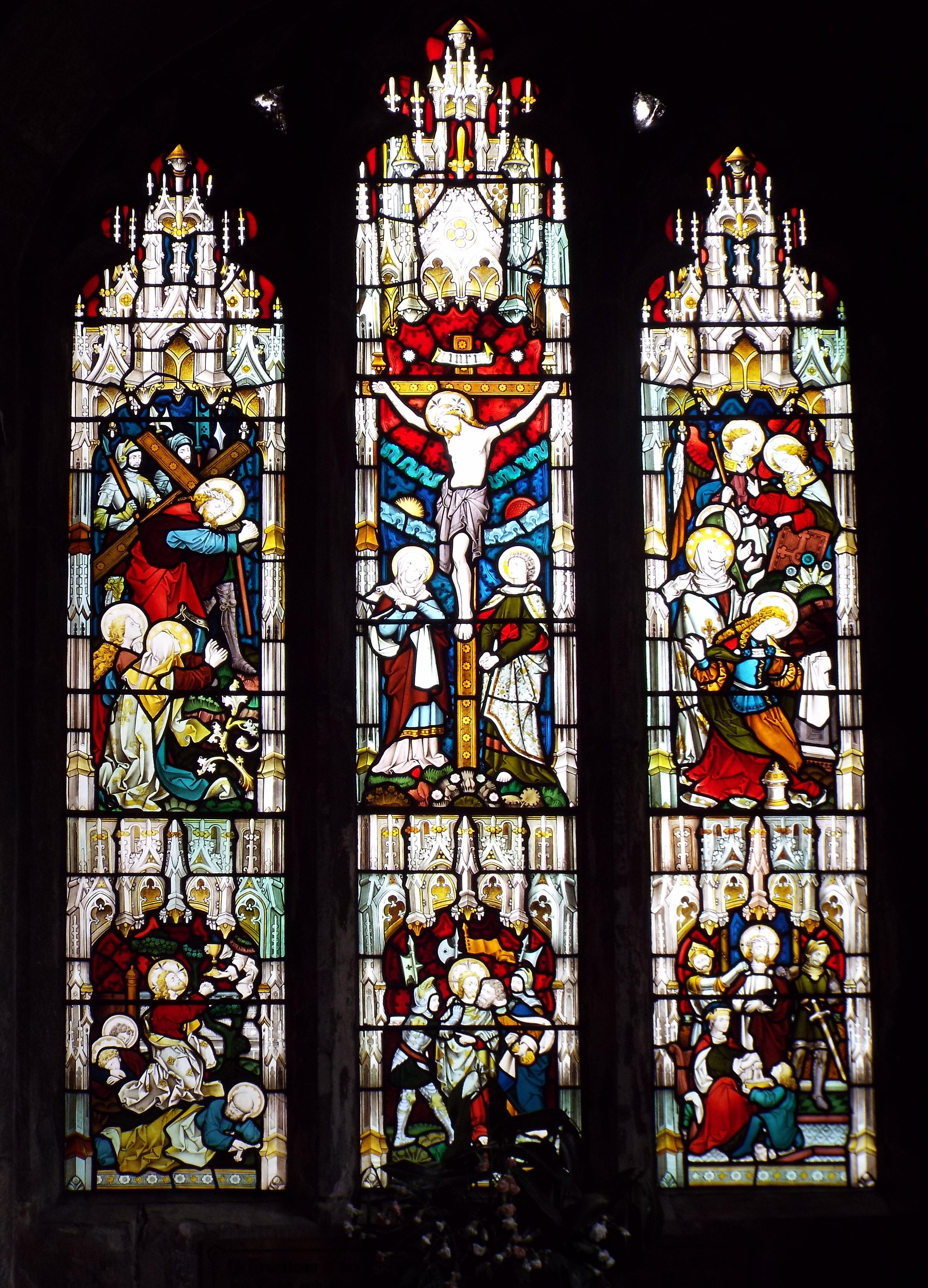
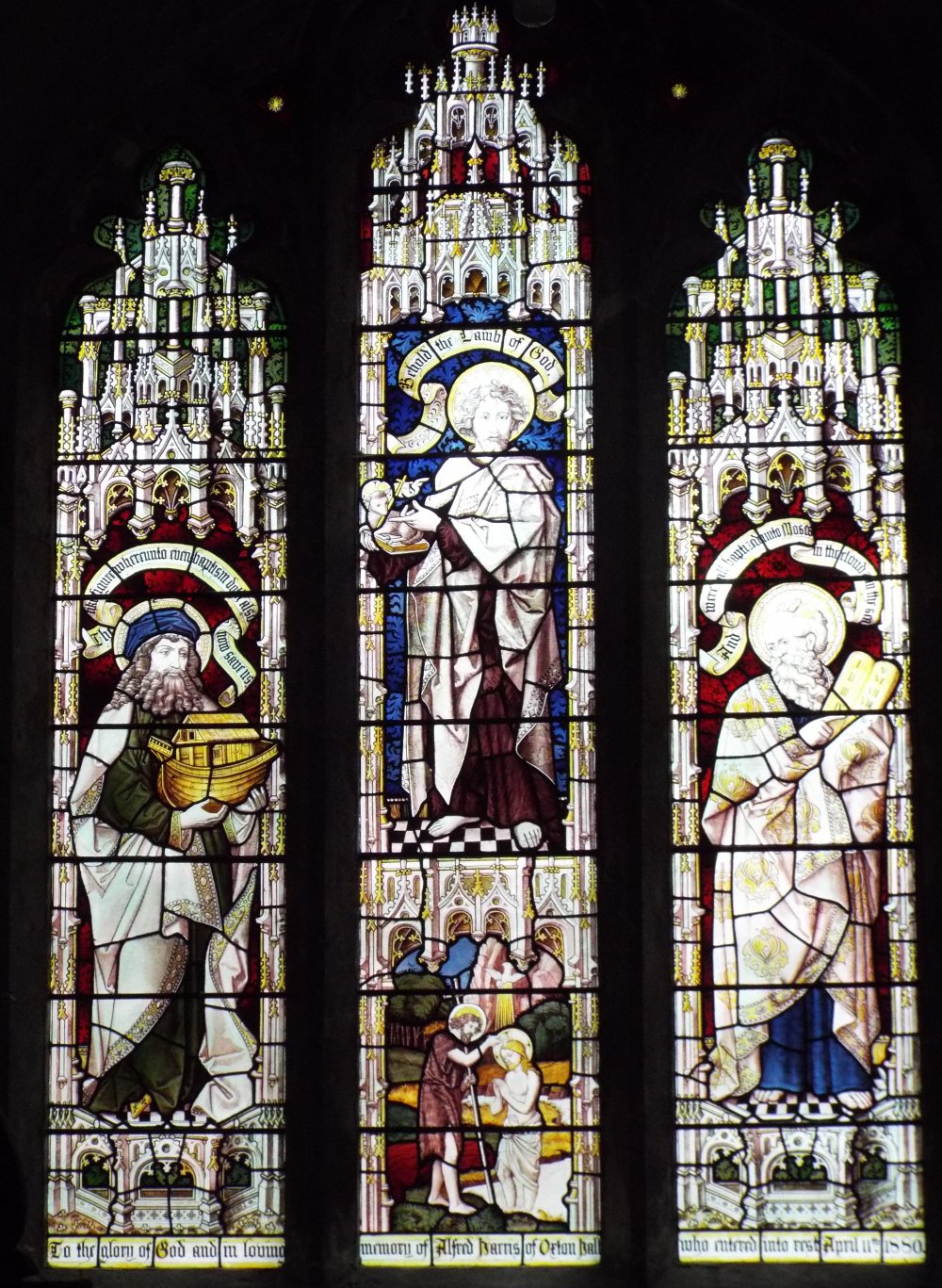
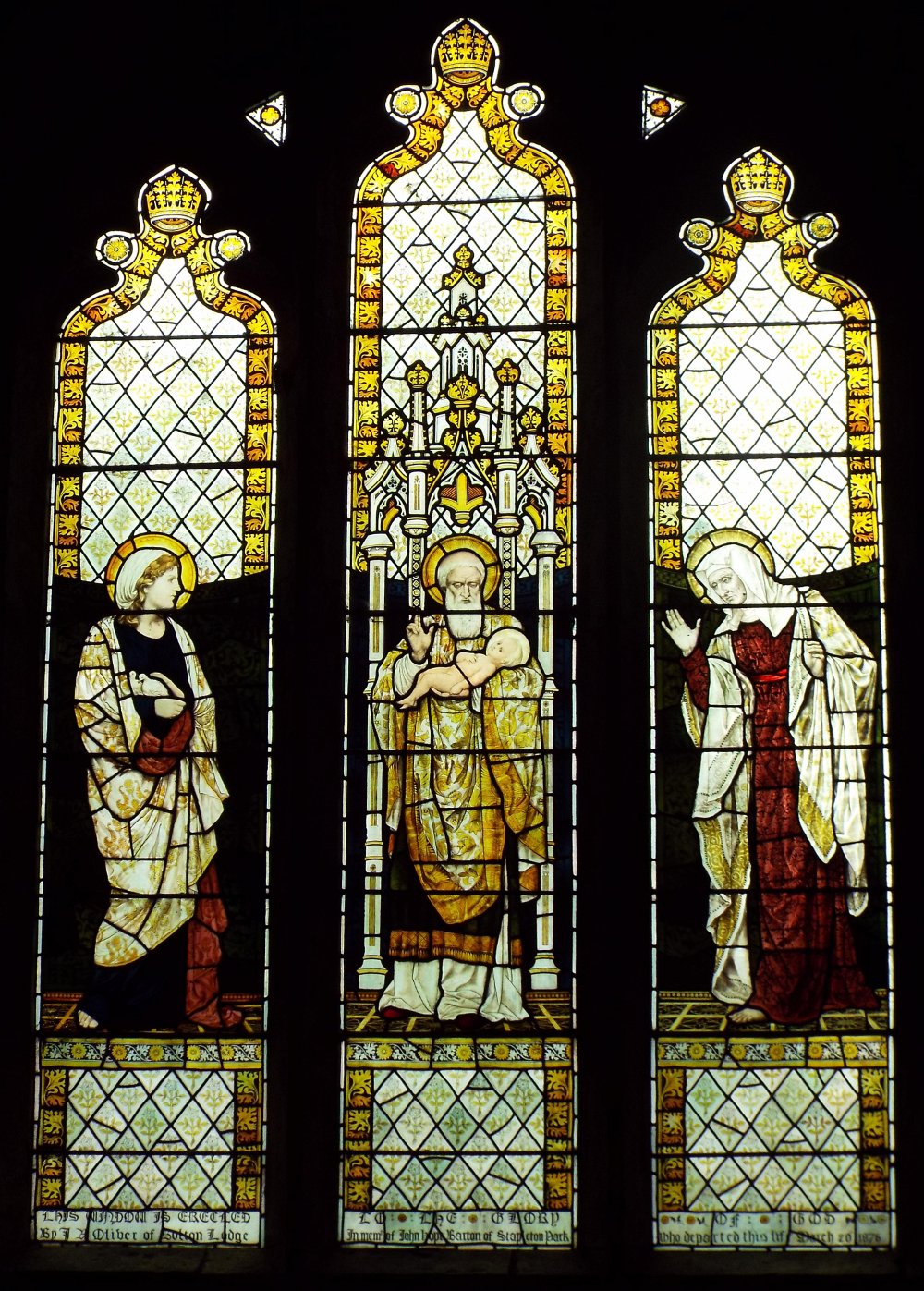
Medieval Graffiti
Within All Saints' you will find on the walls and columns important images scratched into the surface, click here to see a short film about this.
This is the only portion of stonework which, in context, can be really called modern. It was built mid-19th century to replace an old porch made of oak.
The porch
The Lych Gate and Sundial
The Lych Gate (Lych from the old Anglo Saxon word Lyke, meaning corpse) provides a fitting entrance to the church and churchyard. It was constructed by Thompson of Kilburn and given to the church by Mrs Samuel and Mr Geoffrey Smith of Oxton Hall in memory of the late Mr Samuel Smith of Tadcaster. It was dedicated in 1929 by Dr Temple, Lord Archbishop of York.
The tall column topped by a sundial is of 16th century date and is said to have been given by Edward Bunny, rector of this parish from 1575 to 1603. The original inscription, now badly eroded, was recorded in 1866 as saying “SUIS RATIONIBUS CONDUCENDIS”. However the meaning of this is obscure and so it may have already been badly eroded and possibly only these words belonging to a longer inscription had survived. Due to severe deterioration the Sundial was completely restored in 2019.
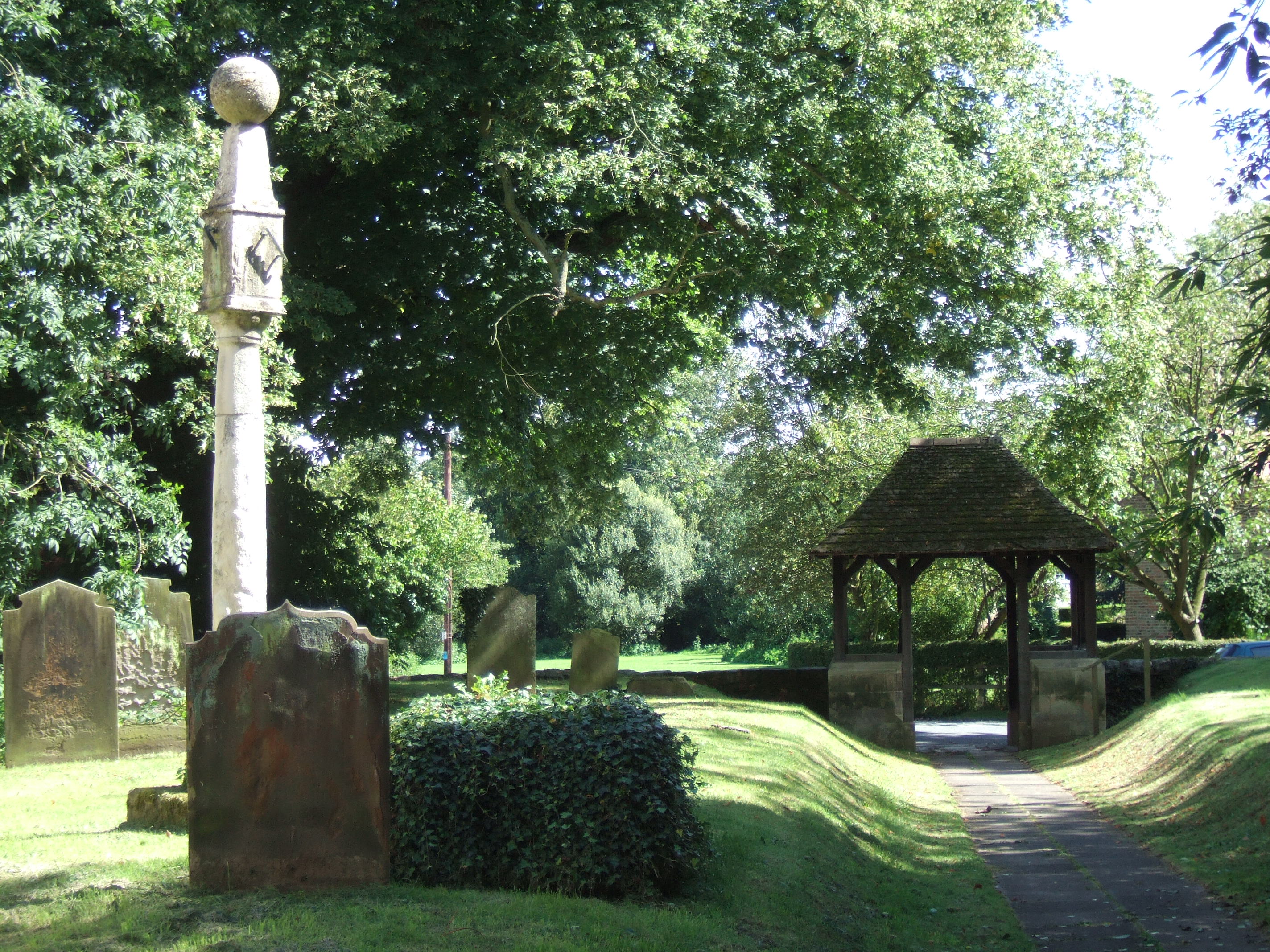
The Sundial June 2019 and the Sundial and Lych Gate
The Font
The font is of 12th century style and came from the earlier church. The (rather heavy) font cover is said to be of Tudor origin but that has been questioned. More likely it was provided during the general refurbishment of 1631.
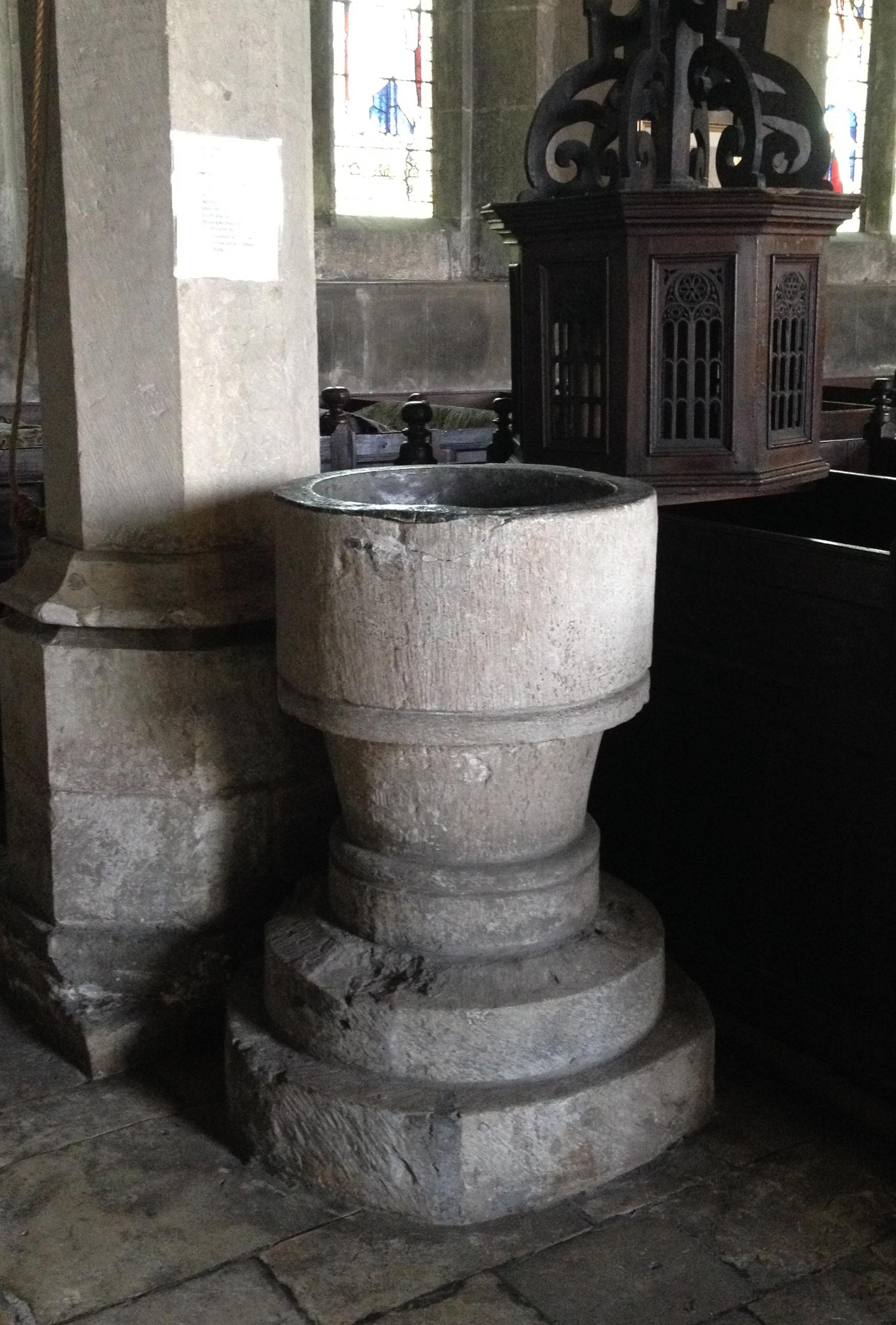
The Chancel Stalls
These were made by a parishioner (Mr Richardson of Appleton Roebuck) in 1865 from designs supplied by Messrs Atkinson, Architects of York. They were the gift of Archdeacon Creyke and replaced the original 15th century oak benches. The return stalls facing the altar are original and form the base of the mediaeval rood-screen. The deep cuts and other mutilations in these ancient stalls were the handiwork of yeomanry who are known to have been quartered in the church during the Civil War. The name of one such soldier ‘Richarde Acroyde’ can be seen carved into the old stall nearest the pulpit.
Chancel pews
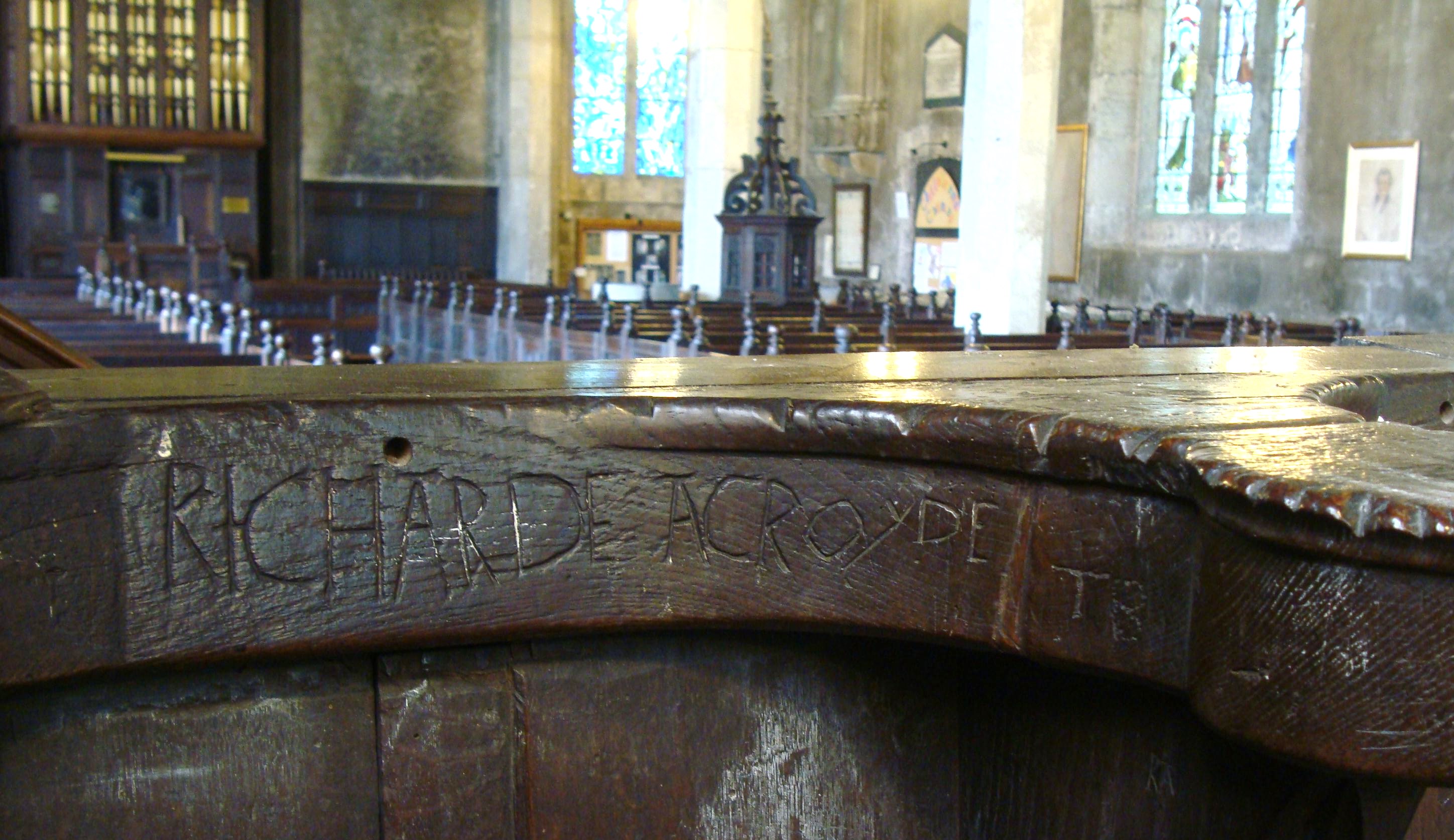
Carvings
The Mass Dials
These are a very good example of a typical Saxon Mass Dial and were removed from the wall close to the Lych Gate in 1936 where they had been placed and exposed for at least a century. Prior to that they had been put to other uses but it is not known exactly what. Originally these dials would have been fixed in the south wall of the previous church building and would have indicated approximately,
by means of a shadow cast by a peg, the hour of Mass and other daylight services. High Mass in early times was 9am and a cross will be observed marking this hour on the more distinct of the two dials.
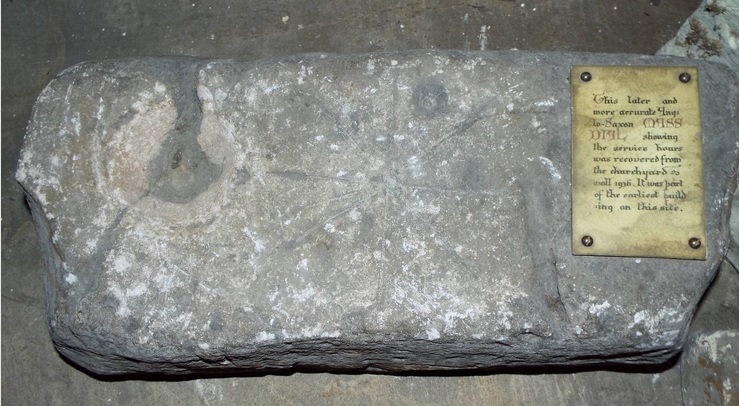
Ordnance Survey Bench marks (BMs) are survey marks made by Ordnance Survey to record height above Ordnance Datum. If the exact height of one BM is known then the exact height of the next can be found by measuring the difference in heights, through a process of spirit levelling. Most commonly, the BMs are found on buildings or other semi-permanent features. Although the main network is no longer being updated, the record is still in existence and the markers will remain until they are eventually destroyed by redevelopment or erosion. There is an OS Cut Benchmark with Bolt on the South Wall of the Tower - see photo with inset below for location.
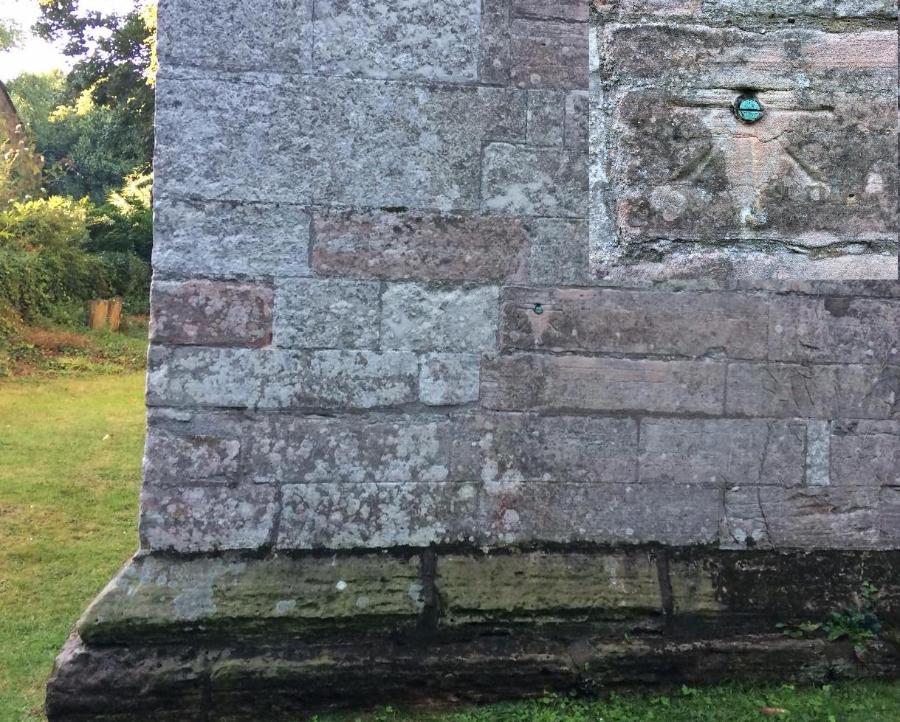
OS Cut Benchmark with Bolt on the South Wall of the Tower
Tower Roof Graffiti
Here are photographs of graffiti which was discovered on the Tower Roof during recent roof repair work. It is not clearly understood how old or original these markings are and will need further investigation to be certain. However most are believed to be original.